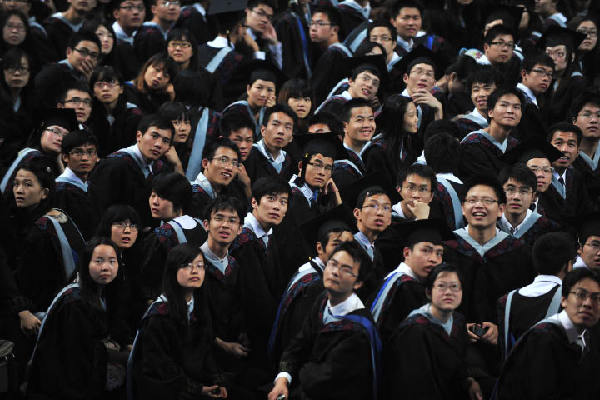| Approach to Higher Education Reform
By staff reporter LU RUCAI
|
 |
| China's higher learning institutions are reforming teaching and enrollment to remain flexible and adaptable to social development. |
ON September 1, Luo Lan became a freshman at Tianjin-based Nankai University. Unlike most of her schoolmates, she did not gain entry merely on the strength of her results in the entrance examination. Luo Lan got a spot thanks to her musical talent. Excelling at playing the harp, the young woman won early admission to Nankai University prior to the national college entrance examination, which promised her access to the school once she reached the minimum mark for class-one universities in the examination. The condition was that if she made the cut, she had to join the university's symphony orchestra.
This form of admission is known as independent enrollment in China, and while initially it was a means to get people into arts and sports programs, its scope has expanded to other fields. The percentage of independently enrolled students has increased from no more than five percent eight years ago to as high as 30 percent in some of Chinese universities.
"In my time there was only one way to go to college, that was taking part in an entrance examination," said Luo Lan's mother, Ms. Zhang, who was admitted to Hebei University in 1982.
The new mode of enrollment is in fact only one of the many reforms China's higher education system is undergoing.
The Process of Marketization
For Luo Lan, the annual tuition fee is RMB 5,000, accommodation is RMB 1,200, and monthly living expenses come to at least RMB 1,000. "It is said universities of lower ranking charge more," said Ms Zhang. In the early 1980s, higher education was free of charge. Her mother gave her RMB 30 per month for her living expenses. From these monthly allotments she had saved RMB 120 by the end of her four years in university, with which she took a train to Beijing to see an optometrist and have a pair of glasses made.
In the decades following 1949 when the PRC was founded, until 1988, China's higher education was free. This changed the destiny of many children from poor families. By 1989, the reality for people seeking a higher education had changed: the formerly nominal tuition fee was hiked to RMB 200, one-seventh of the annual per capita income of urban residents (RMB 1,376). But this was just the beginning. By 2000 the annual tuition fee for universities had risen to RMB 5,000, close to the annual per capita income of urban residents that year (RMB 6,280).
One direct result of high tuition fees is the extent of family expenditures on higher education. A college student's annual tuition fee, food and lodging now approaches RMB 15,000, which is out of reach for most rural families. Even though the government has promulgated an assortment of policies on scholarships and grants, poor communication means many students in the country's backwaters are not clear on the provisions made for them, so they give up before applying.
Seismic change has also occurred in employment prospects for college graduates. Before 1994, regular college students were assigned a job on graduation. Employment was not a worry. Ms Zhang majored in the Chinese language, and she wanted to become a teacher. She had her wish fulfilled, going to work for a military college. Her schoolmates also got decent jobs as journalists in state media such as Xinhua, or as officials in provincial public relations departments.
Job handouts for college graduates like these expired as of 1994, forcing young men and women to cold call employers or use family connections if they had any. But there was still less pressure involved in finding work for people with college degrees as they were a treasured minority in those days. Gross enrollment in higher education was merely 5.7 percent that year, and college graduates numbered 800,000.
In 1999, the government expanded college quotas, and enrollment increased by 48 percent, or 1.08 million in 1998 to 1.59 million in 1999. Finding work soon became more difficult. In 2008, the Ministry of Education admitted for the first time that the expansion of college enrollment had gone too far. Although the pace of expansion slowed down a little after that, the year 2011 found China with a total college enrollment of 6.75 million, eight times that of 1994.
| 